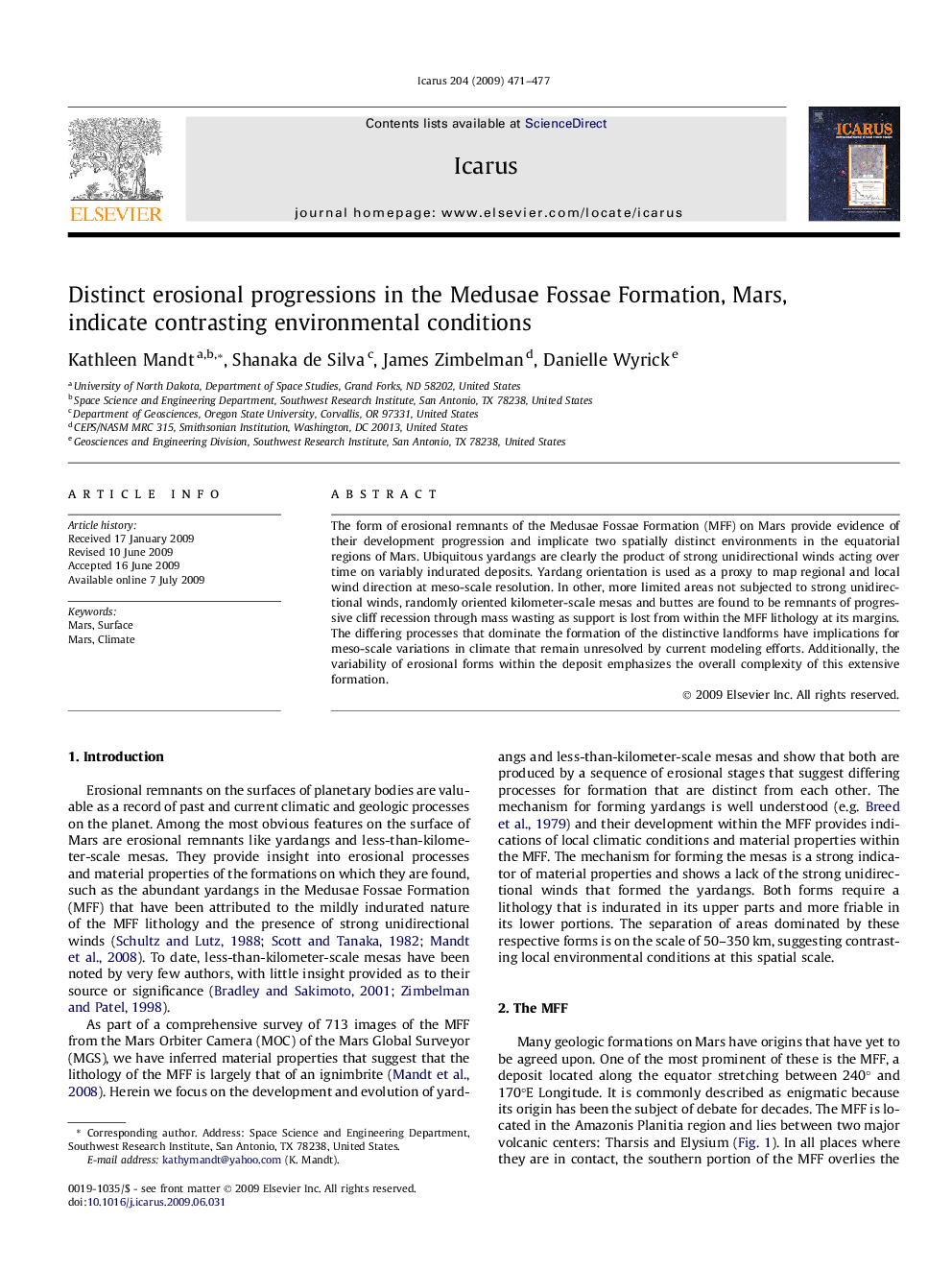| Article ID | Journal | Published Year | Pages | File Type |
|---|---|---|---|---|
| 1774747 | Icarus | 2009 | 7 Pages |
The form of erosional remnants of the Medusae Fossae Formation (MFF) on Mars provide evidence of their development progression and implicate two spatially distinct environments in the equatorial regions of Mars. Ubiquitous yardangs are clearly the product of strong unidirectional winds acting over time on variably indurated deposits. Yardang orientation is used as a proxy to map regional and local wind direction at meso-scale resolution. In other, more limited areas not subjected to strong unidirectional winds, randomly oriented kilometer-scale mesas and buttes are found to be remnants of progressive cliff recession through mass wasting as support is lost from within the MFF lithology at its margins. The differing processes that dominate the formation of the distinctive landforms have implications for meso-scale variations in climate that remain unresolved by current modeling efforts. Additionally, the variability of erosional forms within the deposit emphasizes the overall complexity of this extensive formation.
